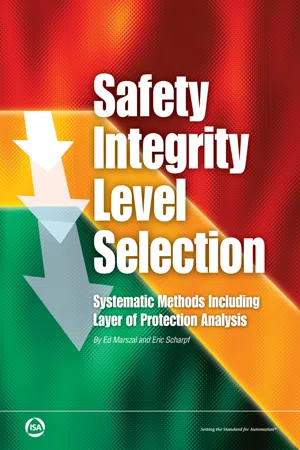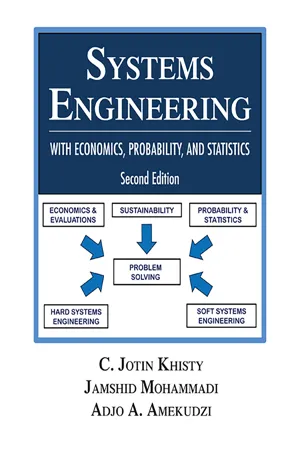Technology & Engineering
Addition Rule of Probability
The Addition Rule of Probability states that the probability of the occurrence of either one of two mutually exclusive events is the sum of their individual probabilities. In other words, if two events cannot occur at the same time, the probability of one or the other occurring is the sum of their individual probabilities.
Written by Perlego with AI-assistance
Related key terms
Related key terms
1 of 4
Related key terms
1 of 3
4 Key excerpts on "Addition Rule of Probability"
- eBook - ePub
- Alandra Kahl(Author)
- 2008(Publication Date)
- Bentham Science Publishers(Publisher)
Consider picking a student at random, meaning that each student has an equal chance of getting chosen. Let M represent the event “the student need assistance in mathematics,” and E represents the event “the student requires assistance in English.” [3] P(M)=0.63, P(E)=0.34, and P(M∩E)=0.27 are the values presented. The Additive Rule of Probability is a formula for calculating the probability of a given event.P (M U E). = P(M) + P(E) — P(M∩B) = 0.63 + 0.34 — 0.27 = 0.70 [28 ] Note how the naive logic that if 63 percent require math assistance and 34 percent need English aid, then 63 plus 34 or 97 percent need help in one or the other results in a much too huge. The proportion of students who need assistance in both disciplines must be reduced; otherwise, those who require assistance in both subjects would be counted twice, once for mathematics and again for English [28 ]. If the occurrences in the issue were mutually exclusive, the simple sum of probabilities would work since P(A∩B) is 0 and makes no difference.Example 5
Volunteers for a disaster relief effort were categorized by their field of expertise (C: building, E: education, and M: medical) and their language skills (S: speaks a single language fluently, T: speaks two or more languages fluently). The following two-way categorization table displays the results:Specialty Language Ability S T C 12 1 E 4 3 M 6 2 The first row of data indicates that 12 volunteers with a construction specialty communicate fluently in a single language, and 1 volunteer with construction specialty talks fluently in at least two languages. The same may be said for the other two rows.A volunteer is picked at random, which means that everyone has the same chance of getting chosen. Calculate the likelihood that [28 ]:His specialty is medicine, and he speaks two or more languages; his specialty is anything other than medicine, and he speaks two or more languages; his specialty is something other than medicine, and he speaks two or more languages [28 ].Solution
When data is presented in a two-way categorization table, it is common to practice adding the row and column totals to the table, resulting in a new table that looks like this:Specialty Language Ability Total S T C 12 1 13 E 4 3 7 M 6 2 8 Total 22 6 28 a. The probability sought is P (M∩T - eBook - ePub
- Edward Marzal, Eric Scharpf(Authors)
- 2002(Publication Date)
- International Society of Automation(Publisher)
CHAPTER 5Rules of ProbabilityMany of the risk analysis techniques and tools organizations use to systematically select safety integrity levels (SILs) are based on a foundation of probability and statistics. This chapter explains some basic probability and statistical concepts for determining both the likelihood and the consequence of unwanted events.We will discuss how to assign probability to a single event by examining either the physical characteristics of the event or by using experimental or historical data. We will also discuss the ways in which events are logically related to each other and how those relationships can be expressed in mathematical terms. For instance, an equipment item can either be working or in a failed state, so the probabilities of the working and failed events are complementary and mutually exclusive. When events are logically related—such as A and B must occur simultaneously to create an unwanted event—you can determine the probability of the combined events by using probability math. This chapter discusses how to use probability multiplication to determine the probability of events that are logically AND’ed and probability addition to determine the probability of events that are logically OR’ed.This chapter also discusses basic fault tree analysis and how it can be used to model the probability of end results or “top events” that are based on complicated combinations of causal events related by often complex logical structures. We also describe the symbols that represent different types of basic events and the logical relationships of events, called gates, along with the basic methods of calculation. Although most of the basic concepts of probability are straightforward, the complexity of the applications of those concepts can make the work challenging.5.1Assigning Probability to an EventProbability is a mathematical expression of the chance that something will occur. It is used to determine the odds of the outcome of an event occurring when one or more possibilities for an outcome exist and when the overall basis for that outcome is completely random. The probability of an event’s occurrence can be described as the number of times that it will occur divided by the number of trials. This relationship is shown in equation 5.1 . Probability P - eBook - ePub
- C. Jotin Khisty, Jamshid Mohammadi, Adjo Amekudzi(Authors)
- 2012(Publication Date)
- J. Ross Publishing(Publisher)
SUMMARY(b) In this part, the probability of concern can be computed using Bayes’ theorem (Eq. 5.39). However, we do not know whether the snow accumulation was heavy or light. Thus we must consider both possibilities in our computation. The required probability is computed through the following series of calculations:In this chapter, the basic rules governing events and equations related to probabilities were reviewed. Probability is a numerical measure that describes the chance of occurrence of a specific event among a number of possibilities. The need to use probability stems from the fact that there is an element of uncertainty involved in any engineering decision-making process as well as in any engineering analysis and design procedure. Essentially, the purpose of analysis and evaluation of engineering data is to provide information for a meaningful estimation of parameters that influence the decision making and system analysis and design. The basic elements of the theory of probability are especially important in understanding the underlying concepts in the evaluation of data and estimation of statistical values of parameters that are involved in engineering problems.The review of events and probability provided in this chapter is brief. Nevertheless, the chapter provides nearly all of the essential equations needed to proceed with solving a given engineering problem. Several examples were provided to better acquaint the reader with the types of problems that an engineer may be facing. For a more complete treatment of the theory of probability as applied to engineering problems, the reader is referred to the list of references at the end of this chapter. These suggested references provide the reader with an ample number of illustrative examples that are useful for better understanding the application of the theory of probability to engineering problems.REFERENCESAng, A. H.-S. and W. H. Tang (2007). Chapter 2 in Probability Concept in Engineering: Emphasis on Applications to Civil and Environmental Engineering - eBook - ePub
- Dennis V. Lindley(Author)
- 2013(Publication Date)
- Wiley(Publisher)
With this terminology, the last form of the multiplication rule reads that your probability of the product of two independent events is the product of their separate probabilities, a result that is attractive because it is easy to remember. Unfortunately, it is true only if the events are independent; otherwise it is wrong, and often seriously wrong. Similarly, (5.2) reads that your probability of the sum of two events is the sum of their separate probabilities. Again, this is true only under restrictions, but this time the restriction is not independence but the requirement that the events be exclusive. Simple as these special forms are, their simplicity can easily lead to errors and are therefore best avoided unless the restrictions that made them valid are always remembered throughout the calculations. The desire for simplicity has often been emphasized, but here is an example where it is possible to go too far and think of the addition and multiplication rules in their simpler forms, forgetting the restrictions that must hold before they are correct. Notice that the restriction, necessary for the simple form of the addition rule, that the events be exclusive, or the disjunction impossible, is a logical restriction, having nothing to do with uncertainty, whereas independence, the restriction with the multiplication rule, is essentially probabilistic. It is perhaps pedantic to point out that the simple form of the addition rule is correct if you judge the disjunction to have probability zero, rather than knowing it is logically impossible, but we will see in §6.8 that it is dangerous to attach probability zero to anything other than a logical impossibility. 5.4 The Basic Rules There are now two rules that your probabilities have to obey: addition and multiplication
Index pages curate the most relevant extracts from our library of academic textbooks. They’ve been created using an in-house natural language model (NLM), each adding context and meaning to key research topics.
Explore more topic indexes
Explore more topic indexes
1 of 6
Explore more topic indexes
1 of 4



